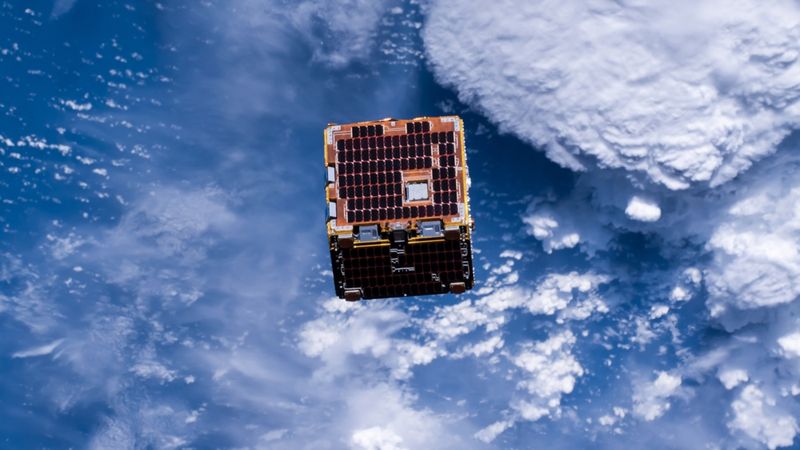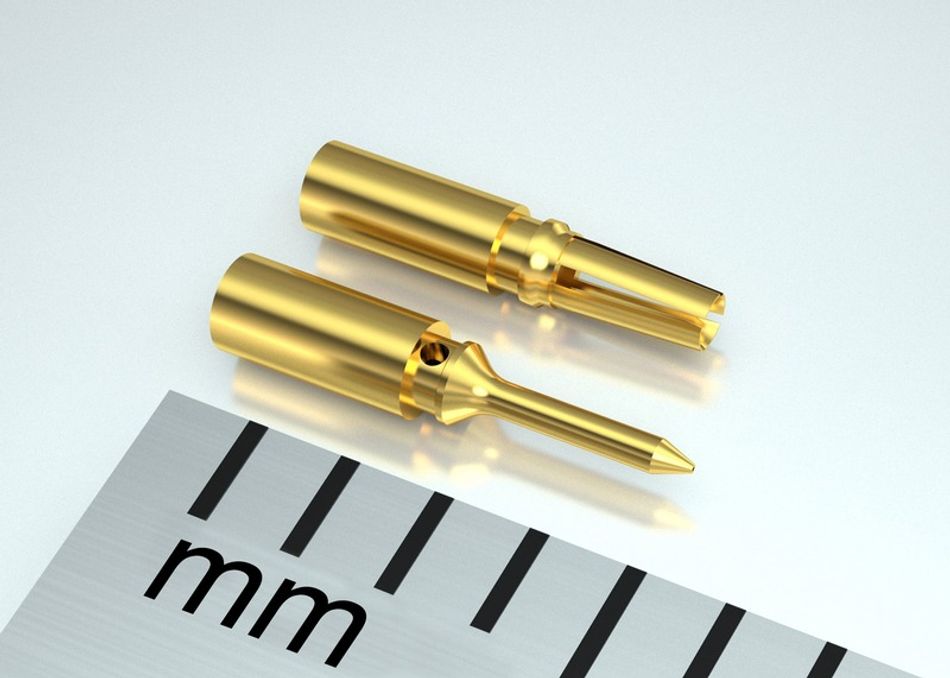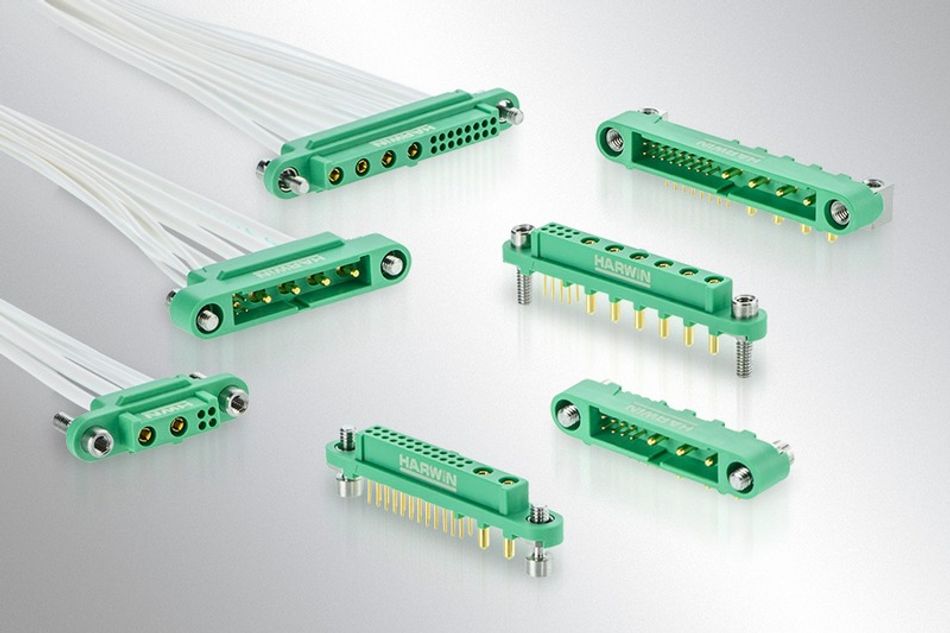Miniaturisation in Space: Designing Compact Yet Robust Components for the Final Frontier
The evolution of new launch systems has made space exploration more accessible than ever. Designers need low-profile connectors that will survive the harsh environments found in orbit. Find out how Harwin is developing connector solutions for the next generation of nanosatellites.

It is boom-time for the space industry. Around the globe, new research projects are being launched, and commercial companies are looking to the sky for new ventures. 2024 saw the fourth consecutive year of records in the number of successful space launches, and 2025 is expected to continue this trend.
Non-governmental applications for space flight have existed for many years. Communications, navigation and imaging have all been markets exploited by commercial ventures, but during this time the mechanisms for launching equipment into space remained under the control of government institutions.
Making Spaceflight Affordable
Commercial space launch companies are powered by new technologies which have resulted in a significant reduction in costs. At the height of NASA’s Space Shuttle program, the cost to launch equipment into Low Earth Orbit (LEO) was more than $50,000 per kilogram. In contrast, today’s Falcon 9 from SpaceX can perform the same task at an advertised cost of less than $3,000 per kilogram1.
The reduced costs have combined with other changes, including rideshare programs and dedicated small satellite launch systems. The practical result is that it is now feasible for small satellites to be launched by smaller organisations.
The market has thus been created for an entirely new generation of devices known as nanosatellites. They are small and lightweight – often as little as a few kilograms. One example is the popular CubeSat concept which is designed to a standardised form factor of 10cm cubes, which greatly simplifies their packing into launch systems.
Alongside the reduced cost of launch, designers are embracing the use of commercial-off-the-shelf systems (COTS). Using readily available components available on the commercial market further reduces the costs of space research and exploration. For the first time, it is even possible for schools and small businesses to create and launch their own satellites for pure scientific research as well as commercial applications. There are more than 4400 currently in orbit, and the number is growing every year.2
Advances in key technologies are contributing to this new generation of smaller satellites. Modern microelectronic systems are available in small and energy-efficient packages. These work in conjunction with miniaturised sensors, high-capacity battery systems and high-speed communications to deliver powerful capabilities packed into small and light devices.
Nanosatellites are therefore masterpieces of compact design, with densely populated printed circuit boards delivering the greatest possible functionality within the limited space available. The key element that brings these systems together is the connector. Board-to-board connectors provide vital links between boards, while cables run up and down the outside of the board stack to carry power and data to all components.
Connectors for Extreme Conditions
Despite the capabilities that can be packed into these small devices, designers of nanosatellites must also contend with one of the harshest environments experienced by any industry. The vacuum of space, combined with extreme temperatures and long-term exposure to radiation, make the task of designing satellites a unique challenge.
Without the protection of the Earth’s atmosphere, any object in space will receive the full force of the sun’s radiation. In locations that are exposed to direct sunlight temperatures can rapidly rise to dangerous levels, while areas that remain in shadow become very cold. The materials from which components are constructed must be chosen with great care to deliver a wide operating temperature range.
The absence of atmospheric pressure also causes materials to behave in unusual ways. In vacuum conditions, some materials release gases that are trapped during their manufacture. This is a process known as outgassing, and is a common problem when plastic is exposed to a vacuum during spaceflight. Gas that is released can condense onto cold surfaces, including sensors of scientific equipment, severely compromising their functionality.
Reliability
Satellites must function for long periods whilst remaining far beyond the possibility of repair. Connectors designed for spaceflight therefore need to provide long-term reliability and resistance to the rigors of launch whilst remaining as light as possible.
Alongside the need for mechanical reliability, satellites must be designed for long-term missions. During their mission, power management becomes a major concern, and space vehicles must be designed to ensure the greatest possible duration. Operating within a strict power budget, any component that introduces unwanted electrical resistance can put the mission at risk.
Gecko from Harwin
The Gecko connector series from Harwin is ideally suited for the three-dimensional puzzle that faces designers creating the latest generation of nanosatellites. They combine compact size with high performance and high reliability, allowing them to cope with the conditions found in spaceflight applications.
At the heart of the Gecko connector is its machined contact. Using a 1.25mm pitch, these miniature contacts are highly durable, capable of over 1000 operations while resisting the shocks and vibration associated with space launch. Their low contact resistance minimises losses and enables the efficient transmission of power and signals throughout the satellite.
In the limited space available inside the satellite, the Gecko-MT (“Mixed Technology”) series combines the 1.25mm pitch signal contacts with larger power contacts fitted within the same housing that can carry up to 10 Amps per circuit. With this mixed signal and power capability, Gecko-MT delivers a flexible and low-profile solution for areas where PCB real estate is at a premium.
Other features that make them ideal for spaceflight applications include the use of high-performance materials. The glass-filled thermoplastic insulator delivers an operating temperature range of -65°C to +150°C. It is also a material with low outgassing properties, making an ideal solution for exposure to the vacuum of space. The Gecko series can also be protected against electromagnetic interference (EMI) with the use of machined aluminium backshells.
Conclusion
The growing commercialisation of space offers small organisations the opportunity to create their own satellites. However, despite this commercialisation, the tough conditions of spaceflight require designers to pay close attention to the components they use.
Harwin manufactures connectors designed especially for high-reliability applications. The Gecko and Gecko-MT series provide ideal solutions for designers creating the next generation of nanosatellites and the further exploration of space.
Read more about The Gecko and Gecko-MT series here.


